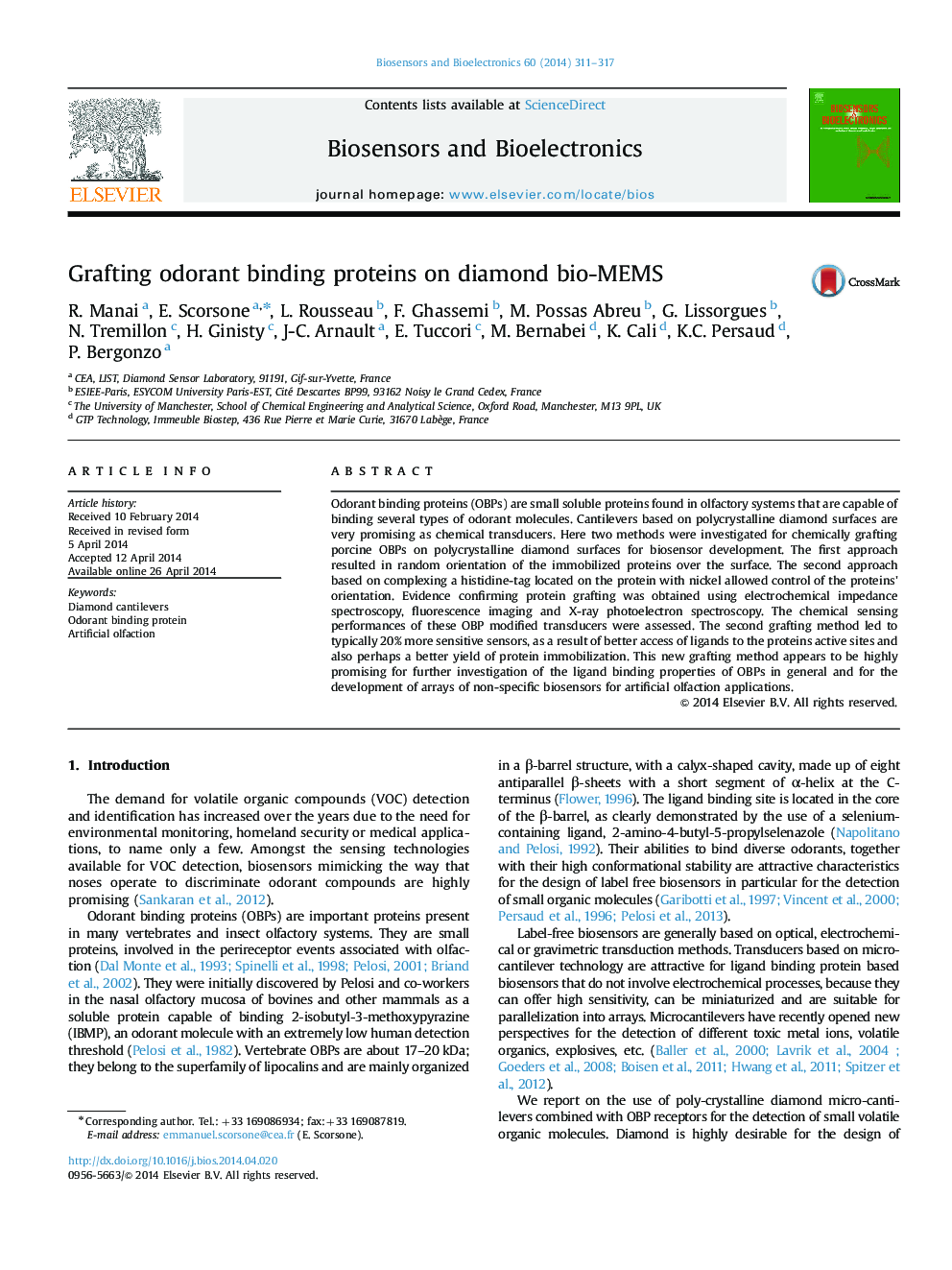| Article ID | Journal | Published Year | Pages | File Type |
|---|---|---|---|---|
| 866450 | Biosensors and Bioelectronics | 2014 | 7 Pages |
•We grafted porcine odorant binding protein (OBP) onto diamond surfaces.•Orientation of immobilized OBP could be controlled.•The process has been applied successfully to bio-MEMS sensors.•OBP grafted diamond cantilevers detect odorant molecules such as 2,4-dinitrotoluene.
Odorant binding proteins (OBPs) are small soluble proteins found in olfactory systems that are capable of binding several types of odorant molecules. Cantilevers based on polycrystalline diamond surfaces are very promising as chemical transducers. Here two methods were investigated for chemically grafting porcine OBPs on polycrystalline diamond surfaces for biosensor development. The first approach resulted in random orientation of the immobilized proteins over the surface. The second approach based on complexing a histidine-tag located on the protein with nickel allowed control of the proteins׳ orientation. Evidence confirming protein grafting was obtained using electrochemical impedance spectroscopy, fluorescence imaging and X-ray photoelectron spectroscopy. The chemical sensing performances of these OBP modified transducers were assessed. The second grafting method led to typically 20% more sensitive sensors, as a result of better access of ligands to the proteins active sites and also perhaps a better yield of protein immobilization. This new grafting method appears to be highly promising for further investigation of the ligand binding properties of OBPs in general and for the development of arrays of non-specific biosensors for artificial olfaction applications.
